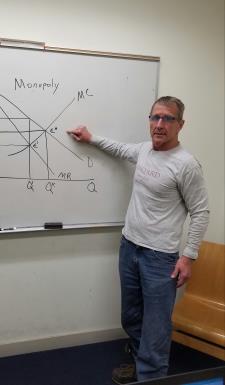
Lenny D. answered • 02/18/20
Former professor at Tufts University with decades on Wall Street
TR = X*P(X) = X*(500-(4/10)X =500X- 4/10X2
MR= 500- (8/10)X
TR is maxed when MR= 0 or 500 = 8/10X or X= (10/8)*500 = 625
At this point TR = 500*625- (4/10)*(6252) = 156,250
π= TR-TC = 500X-(4/10)X2 - 45,000- 264X = -45,000+236X -(4/10)X2
We can either differentiate the Profit function with respect to X , set it to 0 and solve for X or Use the Golden Rule (MR=MC) they are equivalent I will Use the Latter.
MC = dTC/dX = 264 (constant marginal cost)
MR=MC when 264= 500-(8/10)X NOTE: MR is twice as steep as the demand curve
so, 236= (8/10)X or X = (10/8)(236) 295. when X= 295, p = 500-(4/10)(295) = 382
TR = 295*382 = 112,690 TC = 45,000 +236*(295) = 114,620
They are losing money (112,690-114,620) = -1930
Hope this helps





Khanh N.
Thank you for your help! Although my answers are different from yours. For the revenue function I got -0.4x^2 + 580x. I used the vertex -b/2a to determine the maximum quantity for x (which is 725 cases)02/18/20